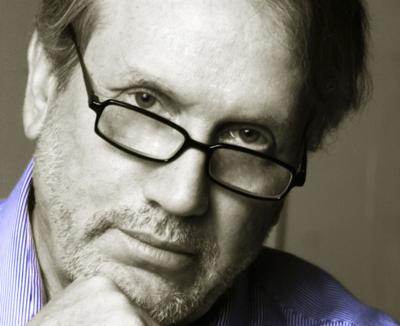The Looming And Crowded GOP Gubernatorial Field

Are you running for governor in 2024?
That was the question I had for U.S. Rep. Jim Banks as we had coffee Monday afternoon. Just hours earlier, two Indiana reporters had suggested that U.S. Rep. Trey Hollingsworth was the “frontrunner” for this open seat.
“I haven’t ruled anything out,” Banks responded. “I will say candidly we’re watching closely what Mike Braun does. If Mike Braun runs for governor, we’ll look at the Senate race. Whatever Mike Braun does creates a dominoes effect in a lot of directions.”
Less than 24 hours later, Sen. Braun had what could be called a “Richard Mourdock moment” when he suggested that Roe v. Wade should really be determined by the states in a Zoom call with reporters. NWI Times reporter Dan Carden asked him if interracial marriage should also be determined by the states instead of by the U.S. Supreme Court. “This should be something where the expression of individual states are able to weigh in on these issues through their own legislation, through their own court systems. Quit trying to put the federal government in charge,” Braun said.
That response drew the kind of criticism that Mourdock’s 2012 U.S. Senate debate blunder on rape and abortion led to Democrat Joe Donnelly’s upset victory a few weeks later.
Braun quickly attempted to walk that back, saying, “I misunderstood a line of questioning that ended up being about interracial marriage. Let me be clear on that issue – there is no question the Constitution prohibits discrimination of any kind based on race, that is not something that is even up for debate, and I condemn racism in any form, at all levels and by any states, entities, or individuals.”
When I suggested that Braun’s original quote might not hurt him in a 2024 GOP gubernatorial primary, a partisan texted me: “Good lord, who do you think we are? You act as if Republicans in Indiana are some monolithic herd of Neanderthals.”
It’s too early to tell how much damage Braun did to himself. Republican primary voters tend to be older, whiter and more conservative than those in a general election. And this is the Trump era, where politicians say things that were once unfathomable with little consequence.
What we do know is that a large Republican field is gathering for the nomination and the chance to face Joe Donnelly, at this point the most likely Democrat nominee.
Braun, Lt. Gov. Suzanne Crouch, Republican Chairman Kyle Hupfer, Attorney General Todd Rokita, Eric Doden, U.S. Reps. Jim Banks and Trey Hollingsworth all currently weighing bids. History tells us that the field will sort itself out well before the primary.
Braun, as he did in 2018 when the spent $5 million of his own money to win the Senate primary, Doden and Hollingsworth are potential self-funder candidates. Hollingsworth won a crowded 9th Congressional District primary in 2016 by spending $3 million in family funds. Crouch has the backing of GOP financier Bob Grand, who helped fund the campaigns of Govs. Mitch Daniels, Mike Pence and Eric Holcomb. Banks has access to a national fundraising base after ascending to House Republican leadership.
In the television age of Hoosier politics, a large field free-for-all gubernatorial primary or convention floor fight has not been the norm.
Since the 1968 Republican convention showdown between Earl Butz, House Speaker Doc Bowen and Secretary of State Edgar Whitcomb, who won with 1,260 votes to 527 for Bowen (and 429 for Butz) and Robert L. Rock’s 953-951 Democratic convention victory over Richard Bodine (with 28 Bodine delegates opting for the hotel pool over the floor), the Indiana gubernatorial nominations have tended to be cut and dried affairs.
The closest showdown came in the 2008 Democratic primary when Jill Long Thompson won the nomination over Jim Schellinger by less than 20,000 votes. In the 1996 Republican primary, Indianapolis Mayor Stephen Goldsmith easily defeated Rex Early and George Witwer with 54% (Early had 37%, Witwer 9%). The Democrats avoided a contested 1988 primary when State Sen. Frank O’Bannon joined Secretary of State Evan Bayh’s ticket that February.
Since then, Bayh and Lt. Gov. John Mutz in 1988, Republican Linley Pearson in 1992, O’Bannon and Goldsmith in 1996, David McIntosh in 2000, Mitch Daniels and Lt. Gov. Joe Kernan in 2004, Mike Pence and John Gregg in 2012, and Gregg again in 2016 were consensus nominees.
So what is taking shape among Indiana Republicans in a looming crowded primary field is a rarity.
Evansville attorney Joshua Claybourn’s assessment of the 2024 field goes like this: Political pundits traditionally look for viable lanes for candidates to occupy; that candidates are essentially running to attract subsets of voters who have consistently different sets of priorities, ideological or otherwise. Although that approach can be oversimplified, it remains an accurate way to assess viability in a primary. Within the Indiana GOP, there is the so-called establishment lane, a Trump lane, and perhaps a third lane for social conservatives who vote on single issues.”
Crouch and Hupfer would be in the establishment lane; Rokita and Banks would be in Trump lane; Braun, Doden and Hollingsworth are the self-funders seeking multi-lane appeal.
If Braun can regain equilibrium and opts for a gubernatorial run, Banks and Rokita could transition for the open Senate seat.
As for defining a “frontrunner,” it’s way, waaaay too early to identify one. We’ve never had a self-funder seek a gubernatorial nomination, let alone three. Stay tuned.
– The columnist is publisher of Howey Politics Indiana at www.howeypolitics.com
